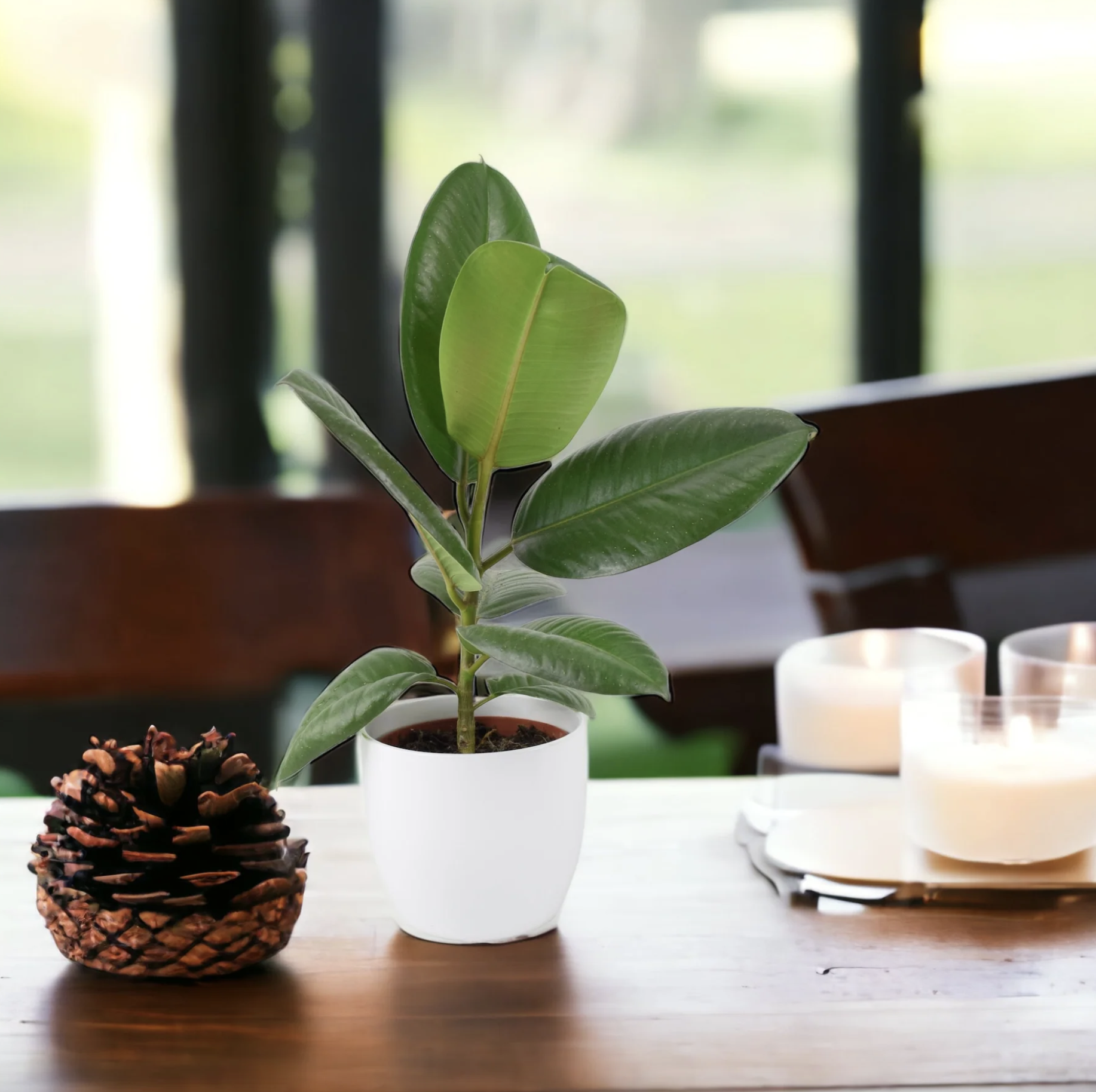How to care for a rubber plant – the almost unkillable houseplant
Low maintenance and fast-growing, the rubber plant is the perfect choice for beginners and ideal for making a statement in a home
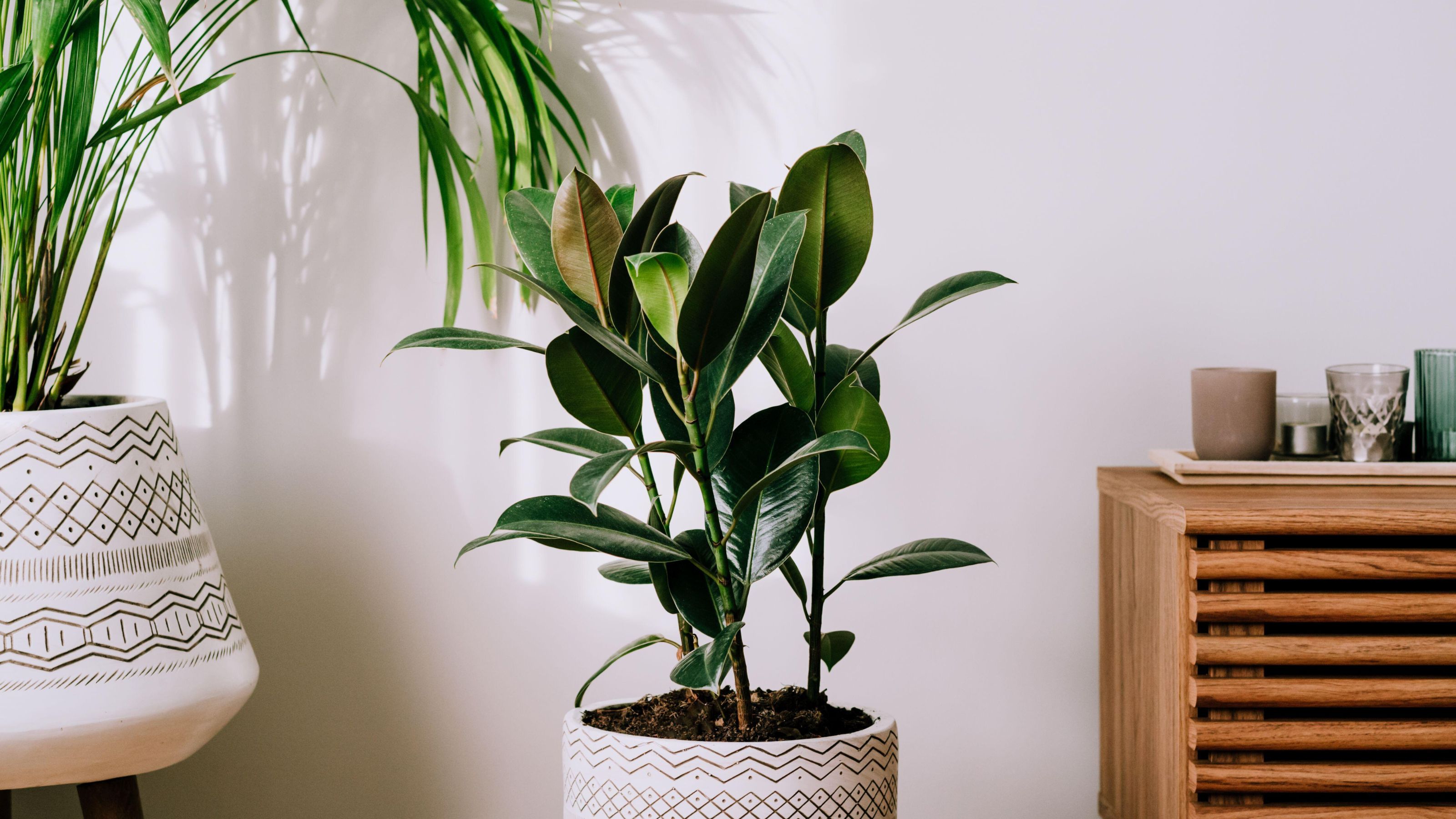

Rubber plants are the perfect introduction to houseplant ownership. Fast-growing, low-maintenance and practically unkillable, rubber plants create a statement without being too demanding.
When a space calls for a towering houseplant, the humble rubber plant offers the perfect solution – it can gain 60cm of height annually, surpassing 2 metres in just a few years.
However, it’s not just its height that makes this house plant idea a favourite. Bringing colour and tropical flair, the rubber plant's thick, waxy leaves come in a range of hues, from deep forest green to lighter variegations and vibrant pink hues. ‘Ficus elastica has stood the test of time, remaining popular over decades and never losing its appeal,’ says Emily Lawlor, owner of Happy Houseplants. It is also one of the best houseplants to boost wellbeing.
How to care for a rubber plant
The plant’s unusual name stems from its milky white sap, which, in the 1990s, was used to make rubber. This sap is mildly toxic if ingested by humans or pets – so be careful and wear gloves when pruning or propagating. If this is of concern to you – why not take a look at one of these pet-friendly houseplants.
‘A rubber plant is a popular choice among plant lovers not only for its looks but, unlike other types of ficus, being very easy to care for,’ says Charlotte Beckett of Between Two Thorns.
A brilliant addition to biophilic design, there are lots of rubber plant varieties. Depending on your preferences for leaf colour, variegation and height, there are several rubber plant varieties. These include Robusta, Tineke, Ruby, Melany, Burgundy and Abidjan.
What you will need
- Rubber plant
- Plastic pot with drainage holes – one size larger than the size of the plant bought
- Decorative pot without holes
- A 7-7-7 liquid houseplant fertiliser, for example, Doff Liquid Growmore Fertiliser on Amazon
- A trowel
- Houseplant compost, such as Westland Houseplant Potting mix on Amazon
- Pine bark, such as Orchid Bark on Amazon
Where to buy a Rubber plant

Best for smaller plant
Stockists smaller plants – £10 for a 30-40cm tall plant. It can be pruned to keep it at a smaller size.
Where should I put my Rubber Plant?
‘Although the rubber plant comes from tropical environments, it prefers its soil to stay quite dry and is quite easily overwatered when treated like general leafy houseplants,’ explains Evie Brownlee, manager at Grow Urban.
Get the Ideal Home Newsletter
Sign up to our newsletter for style and decor inspiration, house makeovers, project advice and more.
‘Originating from the lush rainforests of Southeast Asia, the rubber plant flourishes beneath canopies with varying light levels and thrives in high humidity,’ explains Emily Lawlor from Happy Houseplants.
To mimic this habitat, place your rubber plant in an area with bright but indirect light. ‘Aim for a temperature between 15-24°C in a spot shielded from drafts,’ she adds. It is also advisable to dust leaves regularly to aid photosynthesis.
A rubber plant is also incredibly effective at purifying the air making them a great choice for your bedroom ideas or home offices. They are also one of the best houseplants to improve wellbeing.

How do you water a Rubber Plants?
Just as with prayer plants, watering your rubber plant should be determined by the wetness of the soil rather than time. Test the soil by inserting a finger or moisture meter into the top three inches – if it is dry, then water.
‘Rubber plants do not like to sit in wet soil, so ensure the soil is dry before watering. This will help prevent root rot,’ says Charlotte Beckett of Between Two Thorns. The plant is dormant in winter, so reducing the watering frequency during these months can ensure a healthy plant come spring. This is very similar to snake plants.
Despite preferring drier soil, rubber plants are humidity lovers, notes Evie Brownlee from Grow Urban, ‘mist the leaves with water in a spray bottle a couple of times a week to maintain good levels.’
How to feed a Rubber Plant
As one of the best air-purifying indoor plants, you must encourage vigorous growth and luscious leaves. To achieve this, feeding is essential. ‘For a rubber plant, we recommend looking for a balanced, water-soluble feed formulated for houseplants. Look for plant food with an N-P-K ratio (nitrogen, phosphorus, potassium) of around 7-7-7. Feed every two to four weeks during the growing season,’ says Tom Cook, houseplant buyer at British Garden Centres.

How do you repot a Rubber plant?
With any fast-growing plant, knowing how to repot houseplants is essential.
‘To see if when your houseplant is ready for repotting, check whether the roots are growing out the drainage holes, or you can remove the pot to see if the roots are spiralling densely,’ explains Evie Brownlee. Repotting your rubber plant is best done during spring and summer.
‘Before repotting your rubber plant, water the plant to loosen the roots, then carefully remove it from its old pot, teasing out any tightly packed roots. Place a layer of well-draining potting mix in the bottom of the new pot, position the plant in the centre at the same depth, and fill in around the sides. Water thoroughly after repotting,’ advises Tom Cook from British Garden Centres.
‘When repotting a rubber plant, use a soil mix with perlite – such as Gro-Sure Perlite on Amazon – and pine bark as this echoes the rich, well-draining forest floor of the plant’s natural habitat,’ adds Emily Lawlor from Happy Houseplants.
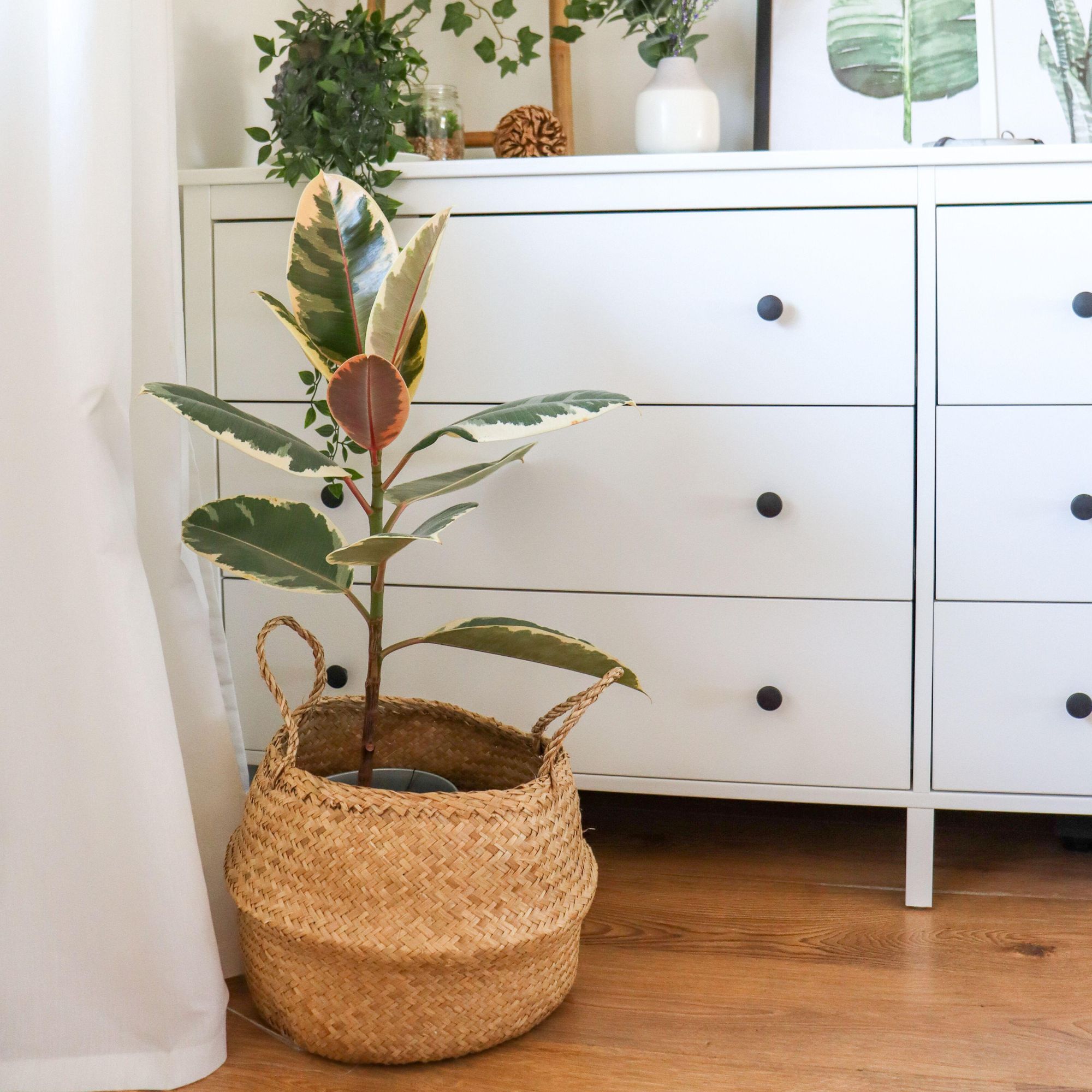
FAQs
Does a rubber plant need to be pruned?
Yes, a rubber plant does benefit from being pruned. Not every home can accommodate a 6ft houseplant, but thankfully, you can prune your rubber plant to your preferred height. ‘Always use clean shears when pruning a plant to reduce the risk of any infection,’ advises Charlotte Beckett of Between Two Thorns.
‘However, it is important that you only chop off the top of your rubber plant when it has reached the desired height as this will cause branching rather than continuing vertical growth.’
Why is my rubber plant dropping leaves
'A rubber plant that is dropping its lower leaves can be the result of a few issues. Firstly the light levels are too low, try introducing your plant into a brighter spot. It could be a watering issue, remember less is more when it comes to a rubber plant, cut back on watering and let it dry out more between waterings,' says Charlotte Beckett from Between Two Thorns.

Holly is one of Ideal Home’s content editors. Starting her career in 2018 as a feature writer and sub-editor for Period Living magazine, she has continued this role also adding regular features for Country Homes & Interiors and the Ideal Home website to her roster. Holly has a passion for traditional and country-inspired interiors – especially kitchen design – and is happiest when exploring the countryside and hills of the Lake District. A keen gardener, she is a strong believer that you can never have too many houseplants.
-
 Will a conservatory add value to your home and how can you maximise it?
Will a conservatory add value to your home and how can you maximise it?This is what the pros say
By Amy Reeves
-
 I’ve been looking for a new signature scent for my home and The White Company's new fragrance is the exact summer holiday smell I needed
I’ve been looking for a new signature scent for my home and The White Company's new fragrance is the exact summer holiday smell I neededSantorini smells fresh, summery and sophisticated
By Kezia Reynolds
-
 How to remove algae from garden walls in five steps – and the cleaning product experts rave about for tackling it fast
How to remove algae from garden walls in five steps – and the cleaning product experts rave about for tackling it fastExperts share their top tips for getting garden walls algae-free
By Katie Sims
-
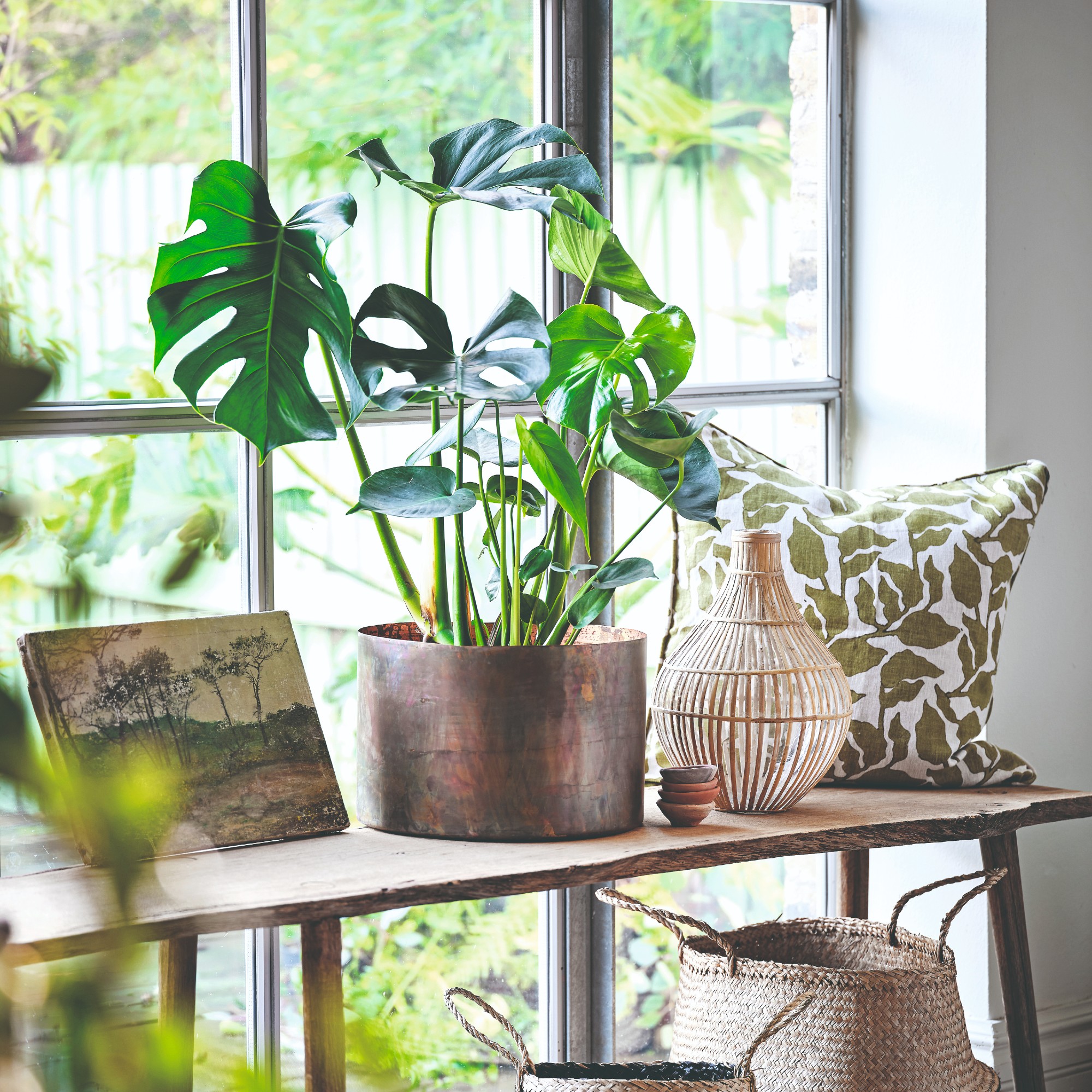 Best soil for Monstera – this is the perfect mix for healthy Swiss cheese plants
Best soil for Monstera – this is the perfect mix for healthy Swiss cheese plantsAll the ingredients you should look out for
By Sophie King
-
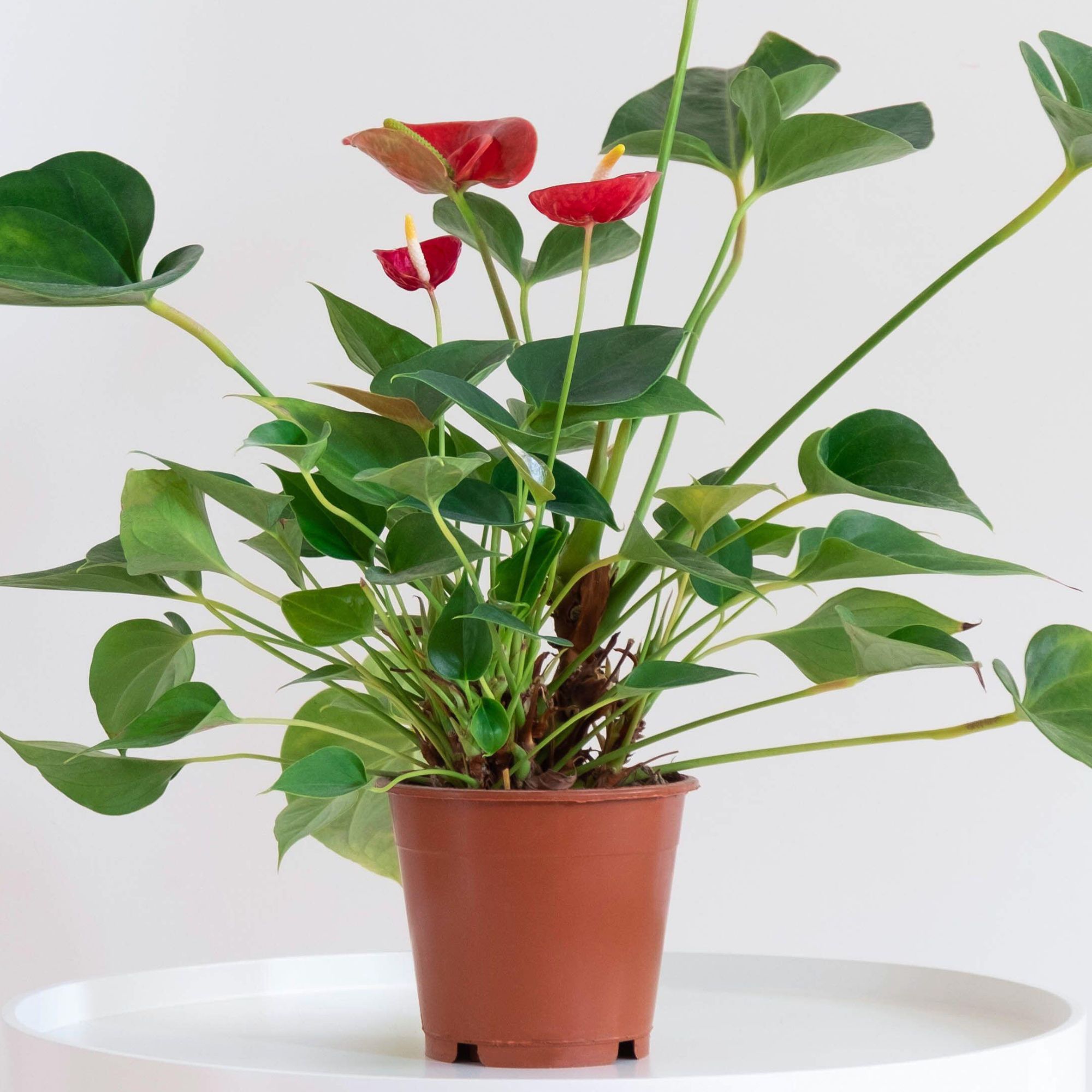 How to propagate anthurium – the three best ways to double these pretty tropical plants
How to propagate anthurium – the three best ways to double these pretty tropical plantsWhether you propagate anthurium through cuttings or separation, you'll love these ways to increase your collection
By Holly Reaney
-
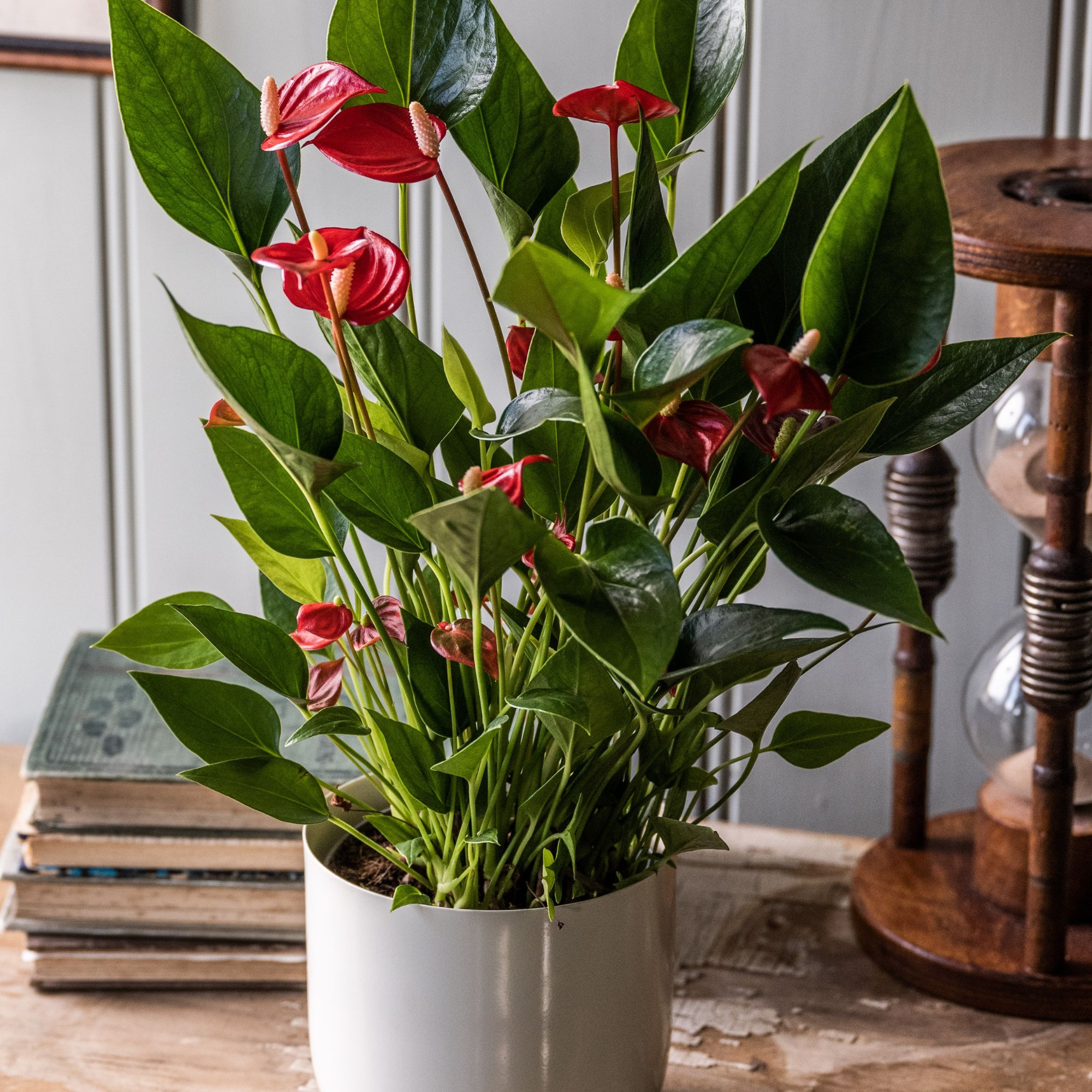 How to care for Anthurium for long-lasting vibrant and tropical colour
How to care for Anthurium for long-lasting vibrant and tropical colourWith their vibrant colours and tropical look, Anthurium andraeanum or Flamingo flowers make for an eye-catching addition to a kitchen, bathroom or conservatory
By Holly Reaney
-
 How to care for spider plants to get the most from this resilient beauty
How to care for spider plants to get the most from this resilient beautyThe retro houseplant is making a comeback – here's how it can thrive
By Holly Reaney
-
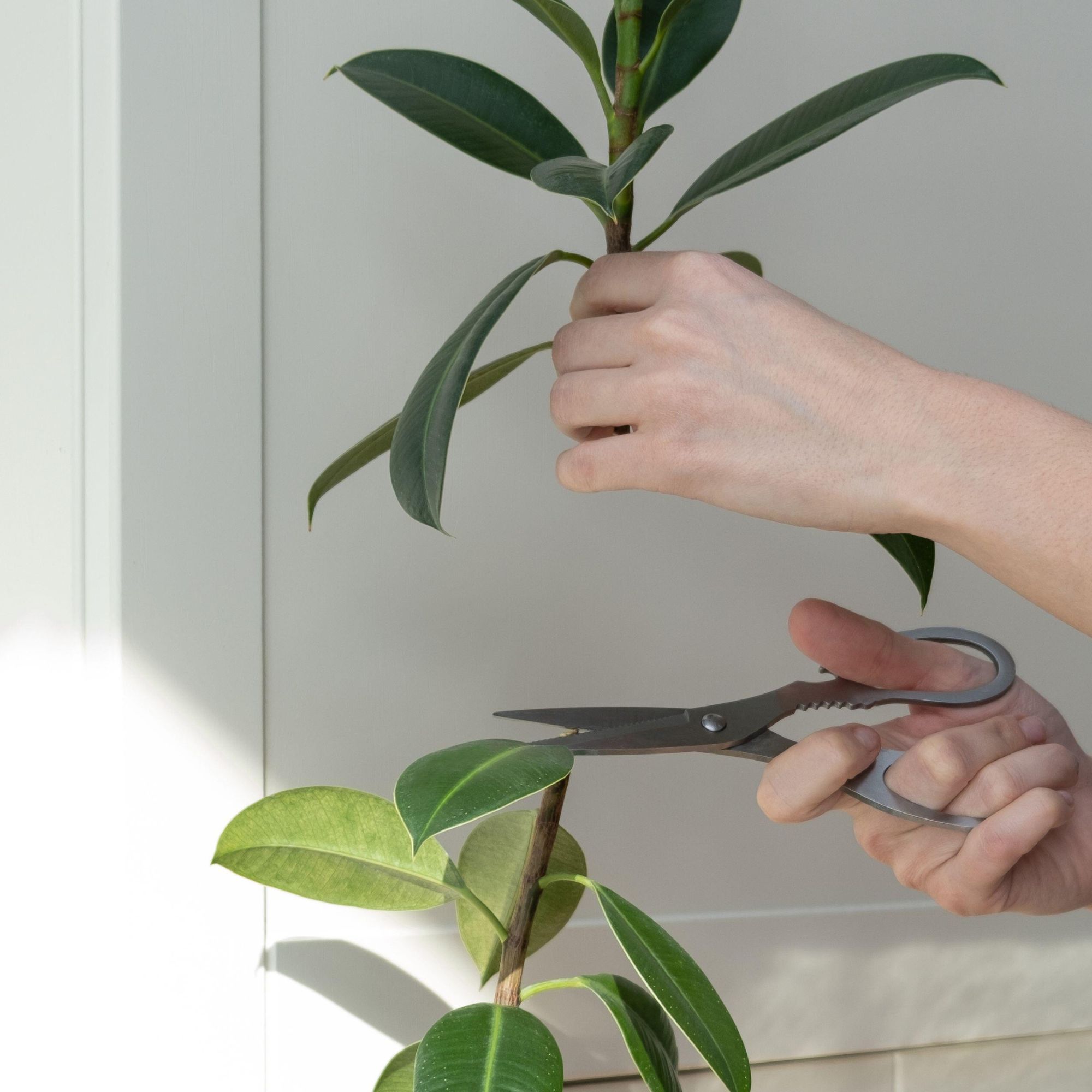 How to propagate a rubber plant - expand your houseplant collection for free
How to propagate a rubber plant - expand your houseplant collection for freeWhy have just one rubber plant when you can have loads?
By Holly Reaney
-
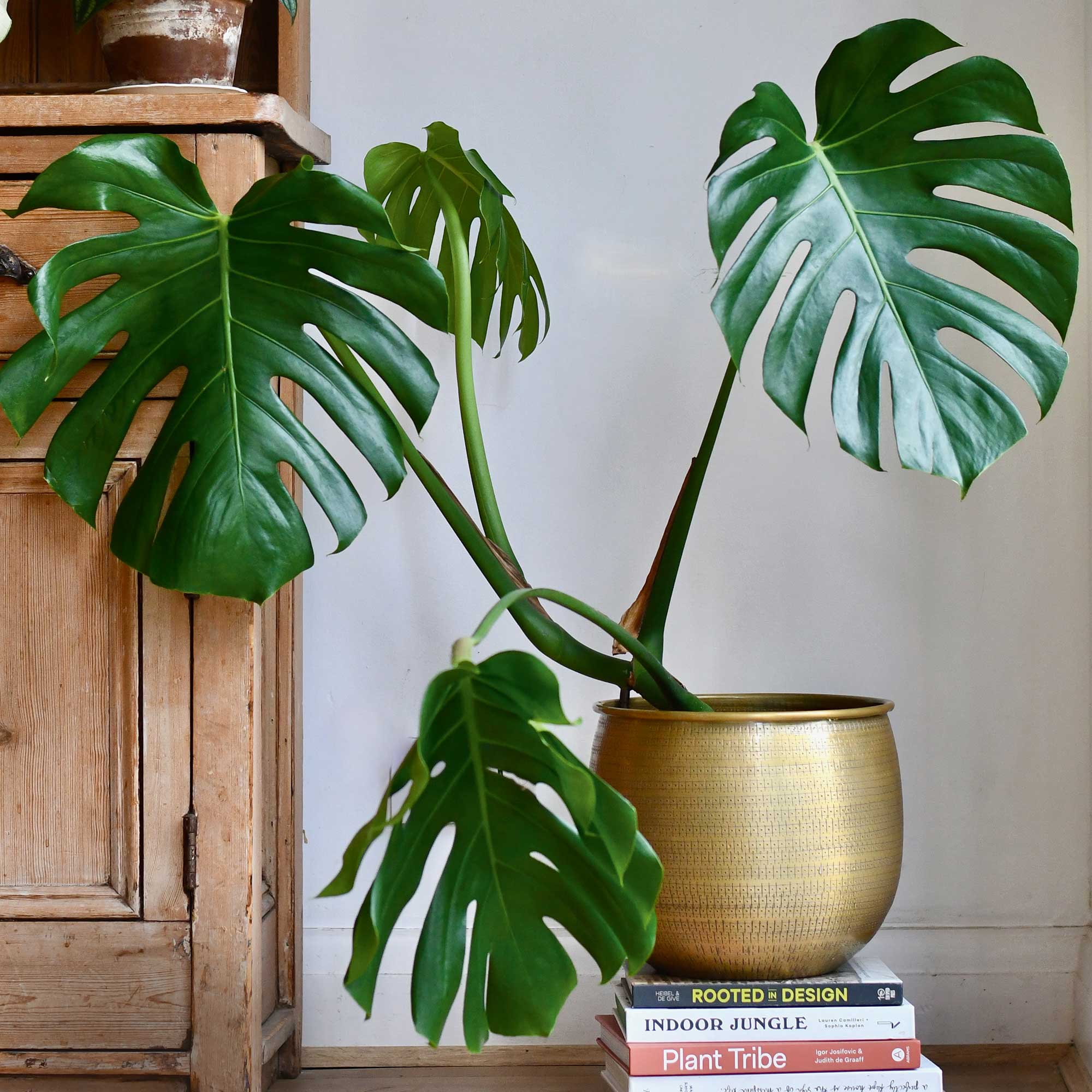 How to care for a monstera deliciosa – the gentle giant of the houseplant world
How to care for a monstera deliciosa – the gentle giant of the houseplant worldHow to care for a monstera deliciosa, including where to position, when to water and how to propagate
By Holly Reaney
-
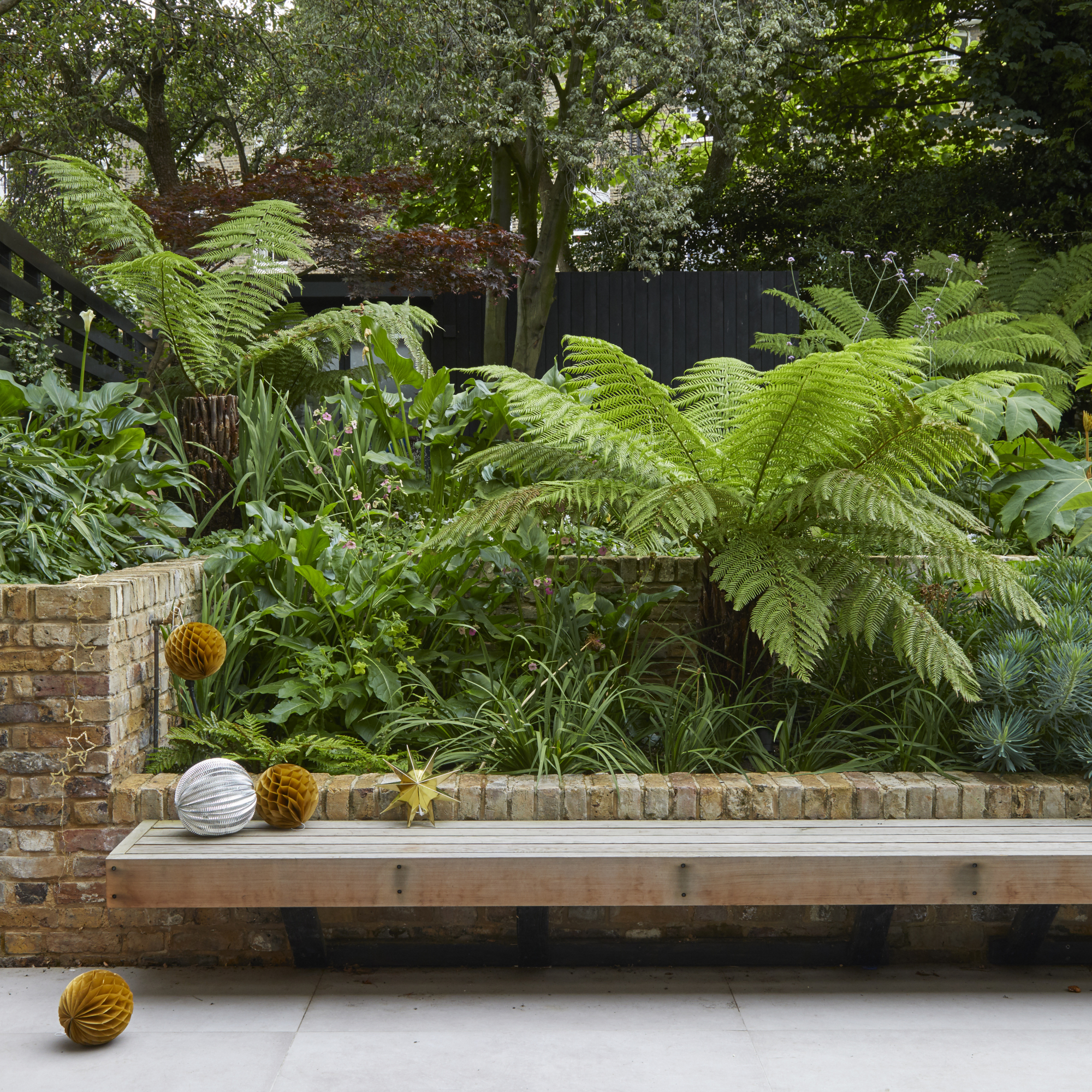 When to cut back ferns to keep them looking their best
When to cut back ferns to keep them looking their bestLearn when to cut back ferns to keep these hardy garden stalwarts in tip-top condition
By Rachel Crow
-
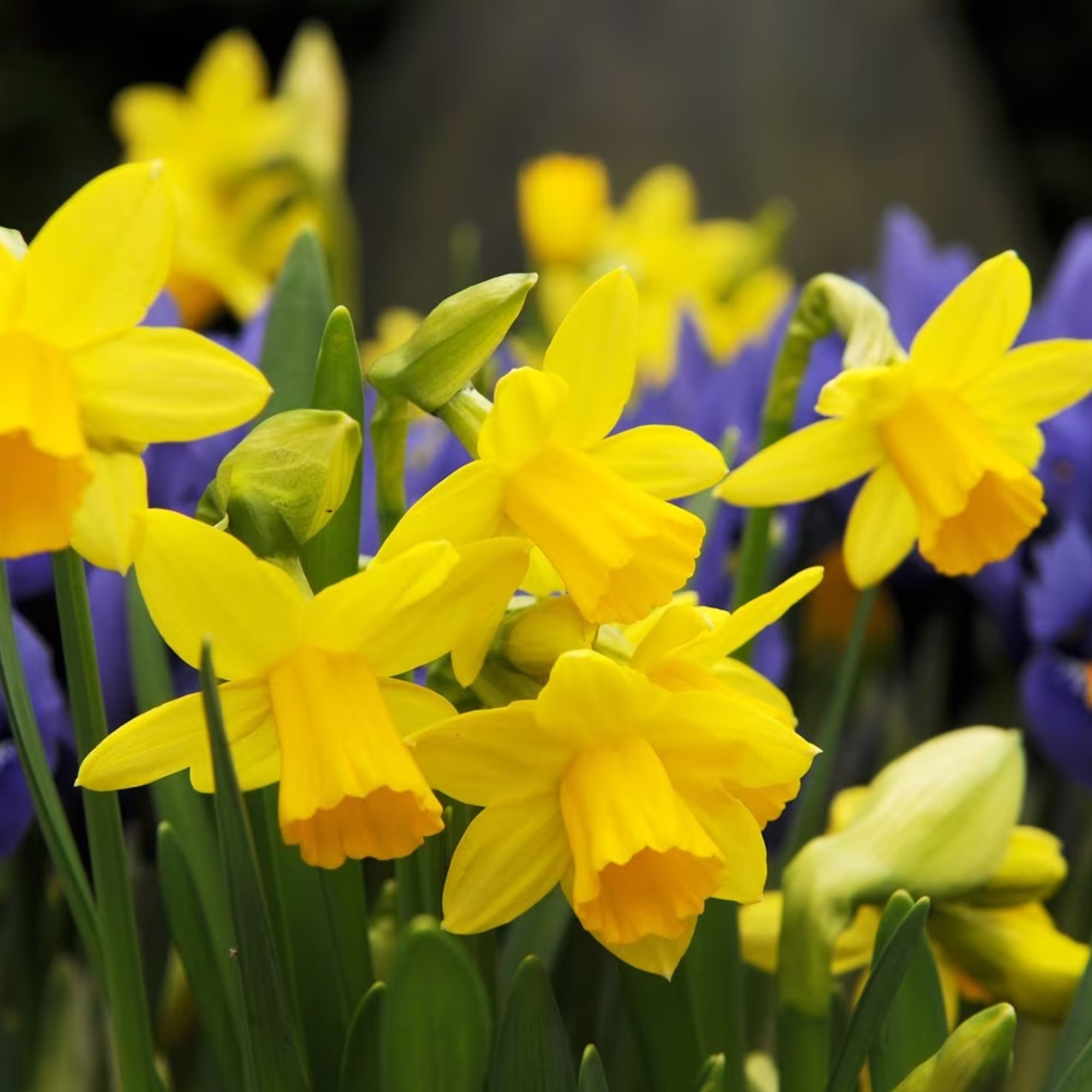 How to plant daffodil bulbs - ensure a pretty display when spring arrives
How to plant daffodil bulbs - ensure a pretty display when spring arrivesEnjoy a beautiful display of daffodils in your garden next spring with this expert advice on how to plant daffodil bulbs
By Rachel Crow
